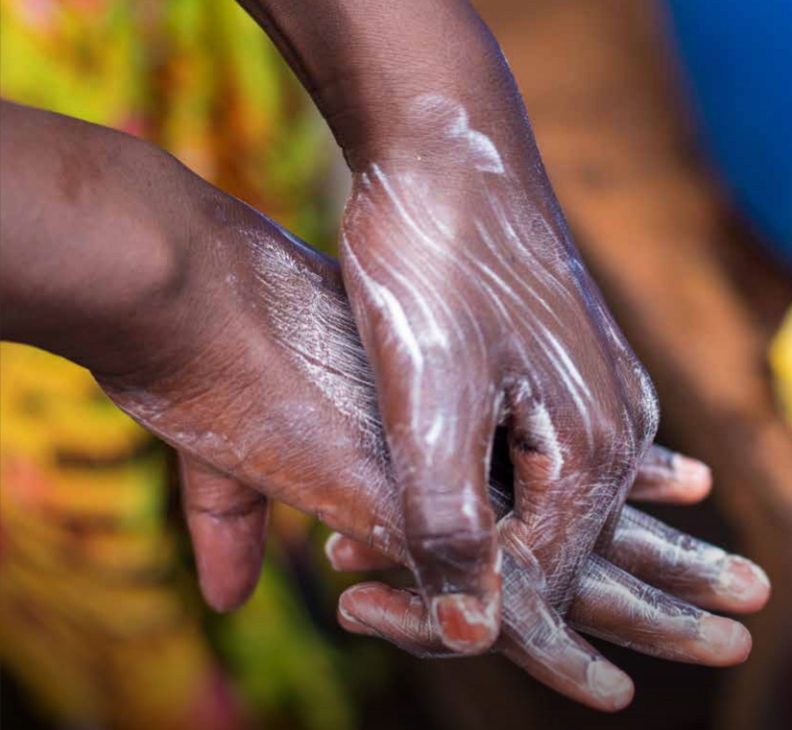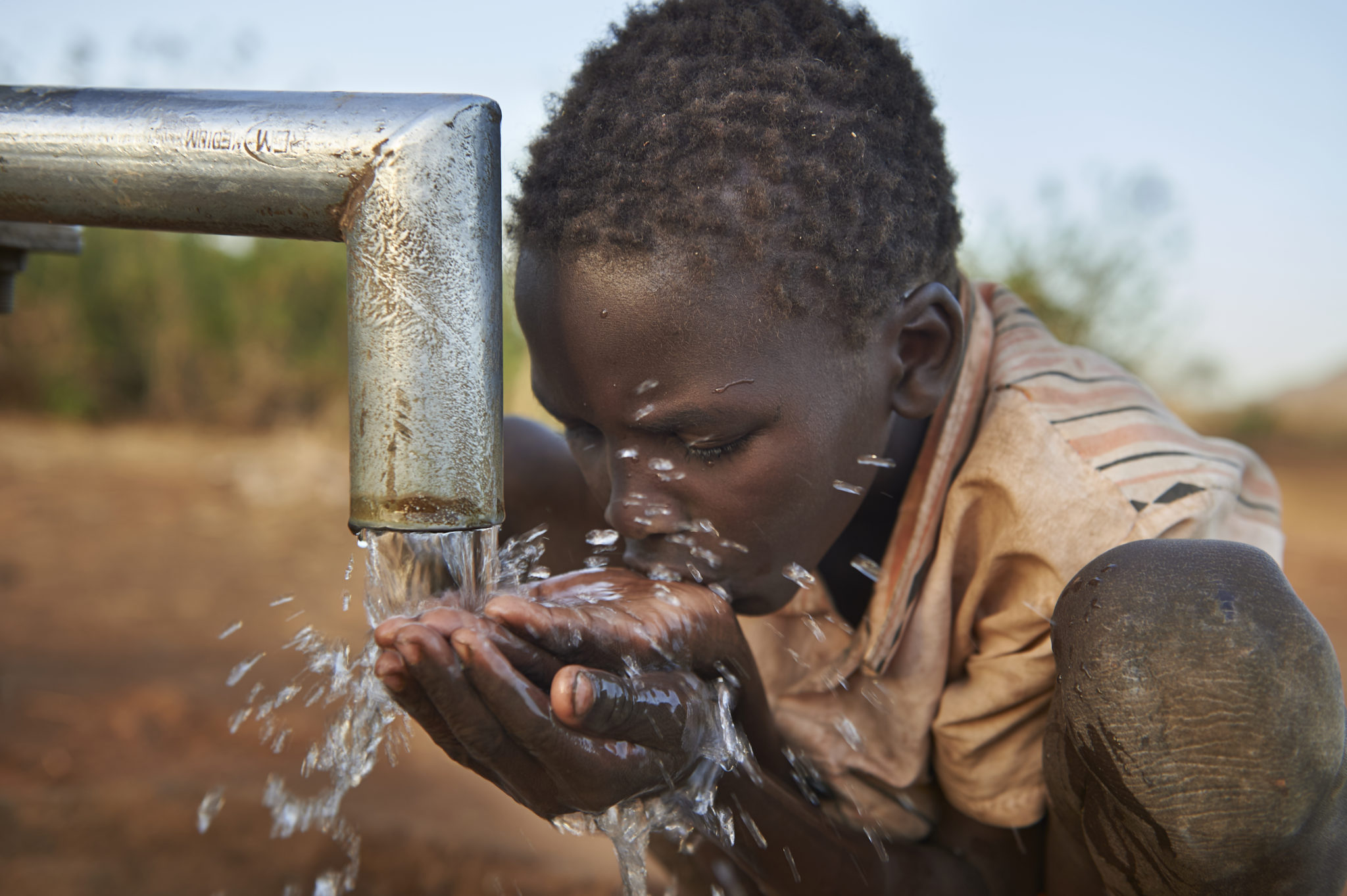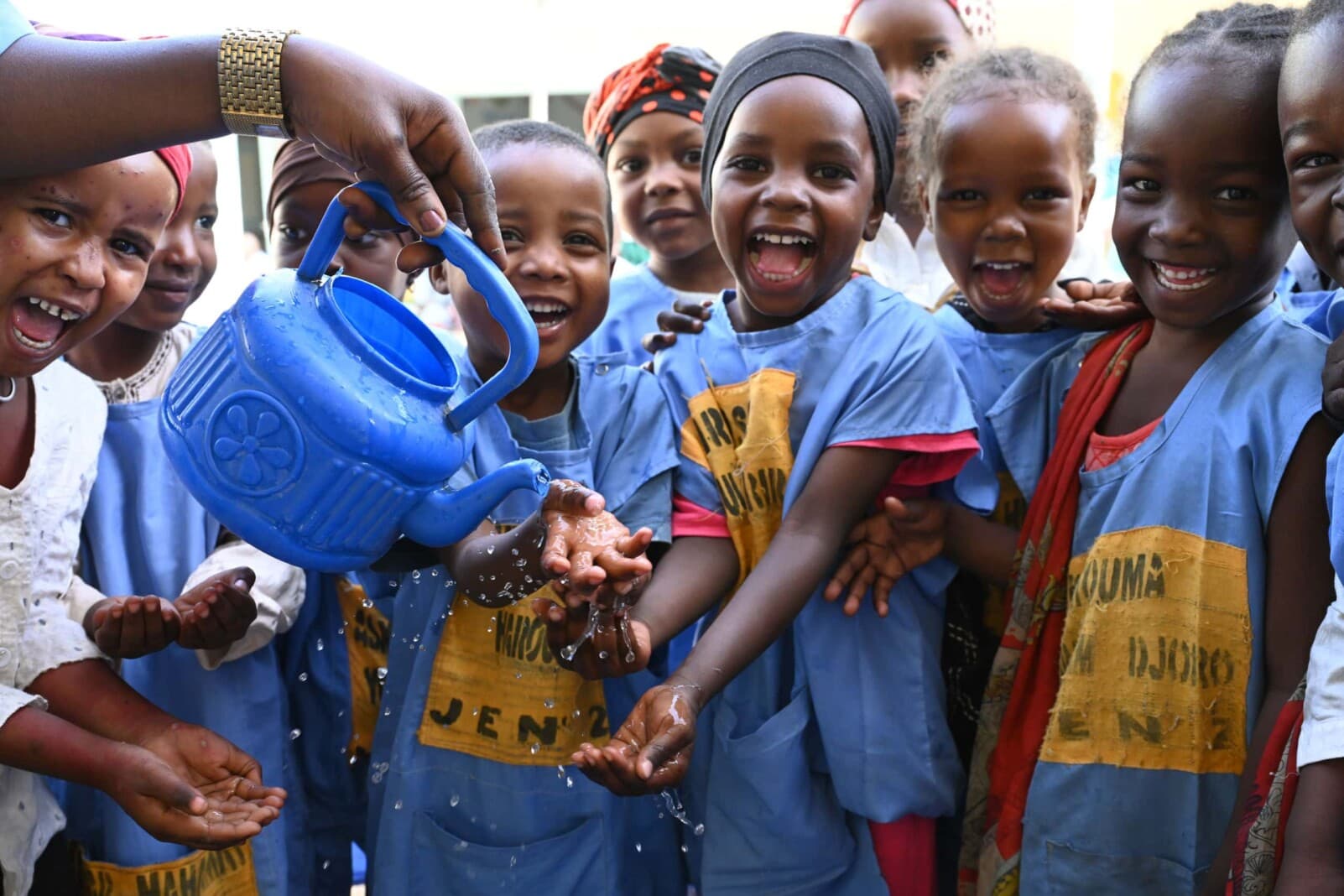Hygiene has long-established links with public health. On Global Handwashing Day 2021, UNICEF and WHO launched ‘State of the World’s Hand Hygiene: a global call to action to make hand hygiene a priority in policy and practice’. The report argues that accelerating progress towards “adequate and equitable hygiene for all” as called for in SDG target 6.2 is a no-regrets investment that leaves the world better prepared to manage future disease outbreaks and pandemics.
Of the range of hygiene behaviours considered important for health, hand washing with soap is a top priority in all settings. The simple act of cleaning hands can save lives and reduce illness by helping prevent the spread of infectious diseases. These diseases can be caused by pathogens (germs) transmitted through the air or via surfaces, food or human faeces. Because people frequently touch their face, food and surfaces, hands play a significant role in spreading disease. It is estimated that 1.4 million people including nearly 400,000 children under five die each year from preventable diseases attributable to inadequate WASH including diarrhoea, acute respiratory infections (ARIs), soil transmitted helminths and undernutrition. Unsafe hand hygiene alone is responsible for 394,000 deaths from diarrhoea and 356,000 deaths from ARIs [1]. As well as preventing a multitude of diseases, hand hygiene can help avoid significant financial costs resulting from sickness and death.
Monitoring handwashing behaviour is difficult, but the presence of soap and water at a designated place has been shown to be a robust proxy indicator. Household surveys increasingly include a handwashing module that involves direct observation of handwashing facilities. Data on drinking water and sanitation services have been routinely collected for many years, but collecting data on handwashing has only recently become standardized. Accordingly, while drinking water and sanitation estimates can be produced from 2000 through 2022, hygiene trends are reported only from 2015 through 2022.
Since 2015 the population with access to basic hygiene services has increased by over 1 billion, from 5.0 billion (67 per cent) to 6 billion (75 per cent). However, 2 billion people still lacked basic services in 2022, including 653 million people with no handwashing facilities at all. If current rates of progess continue the world will reach 85 per cent coverage by 2030, leaving around 1.4 billion people without basic hygiene services. Achieving universal coverage by 2030 will require a threefold increase in current rates of progress globally.
Gender and hygiene
It is widely recognized that inequalities in hygiene services impact women and men in different ways. Inadequate hand hygiene is likely to disproportionately impact women and girls who remain primarily responsible for child care and for domestic chores in many countries around the world. Access to handwashing facilities is also important for maintaining personal hygiene. Women, girls, and other persons who menstruate, have specific additional hygiene needs related to menstrual health.
In 2022, 84 countries had comparable data available on the presence of basic handwashing facilities with soap and water available on premises. Among these there were 25 countries where more than 25 per cent of the population had no handwashing facility at all. The burden associated with not having handwashing facilities is likely to disproportionately impact women and girls in these countries. The most extreme cases are the ten countries where more than half the population still had no handwashing facility at home in 2022.
Footnotes:
[1] Burden of disease attributable to unsafe drinking-water, sanitation and hygiene: 2019 update
Drinking water, sanitation and hygiene (WASH) estimates
Water, sanitation & hygiene (WASH) data
Build and download your own customisable dataset
Resources




Notes on the data
WHO/UNICEF Joint Monitoring Programme for Water Supply, Sanitation and Hygiene
Since 1990, WHO and UNICEF have tracked progress on global water and sanitation goals through the Joint Monitoring Programme for Water Supply, Sanitation and Hygiene (JMP). The JMP monitors trends in coverage; helps build national monitoring capacity in developing countries; develops and harmonises questionnaires, indicators and definitions to ensure comparability of data over time and among countries; and informs policymakers of the status of the water supply and sanitation sector through annual publications. The JMP draws guidance from a technical advisory group of leading experts in water supply, sanitation and hygiene, and from institutions involved in data collection and sector monitoring. Further information about the JMP and its methodology can be found at the JMP website.
Data sources
The JMP estimates for WASH in households are based on information collected through national data from a wide range of different data sources, censuses and surveys, as well as secondary sources in the absence of primary data. Data are harmonized to the extent possible based on internationally agreed indicator definitions. Further details on indicators, data sources and methods for WASH in households estimates can be found at the JMP website, including recommended core questions to support harmonized monitoring: Core questions and indicators for monitoring WASH in households in the SDGs.
Definitions of basic hygiene services in households
The JMP service ladder for hygiene defines three levels of service ranging from ‘no facility’ to ‘basic’ which is the global indicator on hygiene for SDG target 6.2. Households that have a handwashing facility with both soap and water available at home meet the SDG standard for a ‘basic’ hygiene service. If households have a handwashing facility but lack water and/or soap, it counts as a ‘limited’ service. If households do not have any facility for washing hands within their dwelling, yard or plot, it counts as ‘no facility’. The basic hygiene indicator is also used for monitoring progress towards SDG target 1.4 on universal access to basic services.
